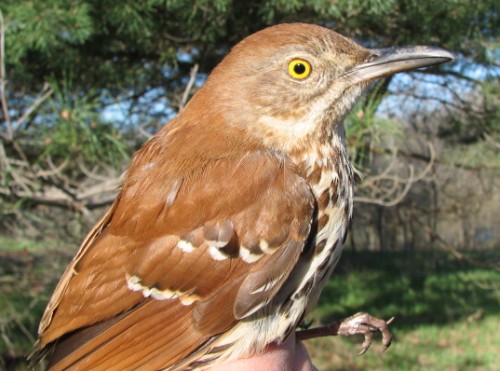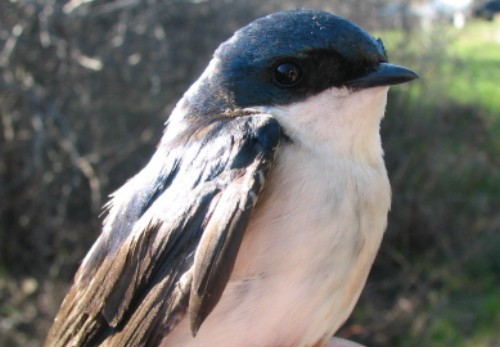|
McGILL BIRD OBSERVATORY |
||||||||||||||||||||||||||||||||||||||||||||||||||||||||||||||||||
Welcome
to the McGill Bird Observatory weekly report.
Click here for a complete listing of our archives.
Bander-in-charge: Barbara
Frei Notes: There was no denying spring was in the air in the 5th week of the spring migration. Unfortunately, a combination of late April showers and conflicts in the BIC schedule meant that banding took place solely on one day of week 5. Yet, even with the diminished coverage of the week and the continued stalling of migration due to the cold northern winds dominating the weather fronts, we are at 79 species observed on site, only 1 behind last year at this time. A big round of applause for our dedicated censusers and volunteers for braving the weather and early mornings to search out those elusive warblers and other spring migrants slowly trickling in! We have a total of 8 new species observed this week. Common Loons and Double-crested Cormorants with their streamlined and arrow-shaped bodies were lone silhouettes breaking through the rosy dawns on several mornings this week. A Western Palm Warbler flitted among budding branches of the Manitoba Maples lining the driveway, in company of the increasing (from last week) Ruby-crowned Kinglets whose chuckling laughter resonated throughout the site. On a rainy and cold Friday morning, a silent Hermit Thrush darted into the wet tangles of shrubs and vines down the back path, flashing his rusty rump to brighten the censuser’s day. A warm and bright Tuesday morning brought several more birds. The growing swarm of Tree Swallows hid amongst them a smaller and duller Bank Swallow as it joined the revelry of dazzling aerobatics against the backdrop of a matchless blue sky. A closer look above the far ‘golfball-shaped’ weather station showed a turbulent mass of Cliff Swallows entering and exiting their nests. Another shy warbler was spotted hiding amongst the spring green leaves – a male Nashville Warbler. Lastly, a highlight of the day was the multiple sightings of Brown Thrashers – 3 in all – singing their wonderfully erratic song or skulking in the bushes. One individual was banded and proceeded to get caught 2 more times, always in different nets! We didn’t mind the closer look at all. Since all the banding this week occurred on a single day, the top ten banded this week displays no particular trend – other than the fact that the Red-winged Blackbirds remained the most plentiful. For the top ten observed, Canada Geese and Red-winged Blackbirds are again at the top – similar to last week and this week last year (some things don’t change that easily it seems!). Tree Swallows are far more plentiful this year than last – with almost every nest box being occupied by a pair. The familiar Song Sparrows are often singing within their territories or paired together as they search the grassy fields for hummocks that would make a good shelter to tuck their nest beneath (so watch out underfoot!). American Goldfinches and Ruby-crowned Kinglets are still plentiful, while American Tree Sparrows, Slate-colored Juncos, Golden-crowned Kinglets and American Robins have disappeared or decreased in number as they continue to migrate. Although the winds continued from the north – stalling migration – there was no denying of spring. Buds of the apple and hawthorn trees have broken with a whispered promise of fresh green leaves. In the forest understory there is a carpet of the speckled Trout Lily leaves, Wood Violets and Trilliums. The grass grows so quickly that another centimeter grows every time our backs turn for a moment, and the pond is filled with Wood Frogs, Leopard Frogs, Spring Peepers and Painted Turtles. Every moment is more exciting then the last!
|


